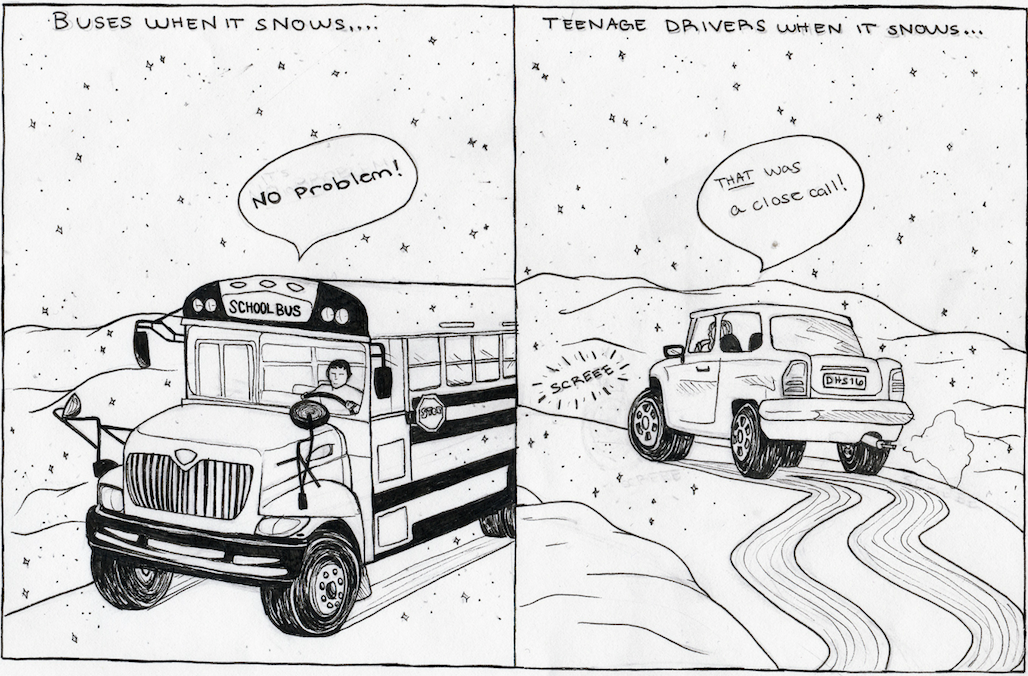Snow day determinations should consider new drivers, not just professional bus drivers
By Caden Koenig
Every year, students who attend Dexter Community Schools are awarded with five free snow days. If the school district awards us more than five snow days, then any snow days, or cold days, over the five day regulation leads to extra days slapped on at the end of the year.
This means if the district has six snow days, then one extra day would be sent to June to make up for that missed day. However, it is unusual for Mother Nature to help us out and give us enough snow for five snow days. Maybe once a year, we might get a snow day even when the roads aren’t terrible. Or there are the days the roads are awful and we are still required to show up to 2200 North Parker Road at 8:00 a.m. It raises one question: What is the criteria required for a snow day?
It is known by some that our Superintendent Chris Timmis and other school board members make the decision to have a snow day either the night before or the morning of. As of now, the protocol is to assess if the roads are safe enough for students to undergo their daily commute to school. Timmis and other members of the school board wake up early in the morning, or stay up late at night, and drive out on the roads to decide if they are safe, taking into consideration if the buses can safely navigate the roads.
However, the bus driver’s ability to drive on slippery roads should not be the only concern when determining snow days. Everyday in the high school, students are turning 16 and becoming new drivers. With new drivers on the road experiencing their first winter, they may be in danger or putting others in danger. So then it raises the question: Do we base the road conditions off a bus driver who is paid to drive or do we base it off of the lack of skill set and experience of a new driver?
New drivers already have a lack of confidence since they don’t have the experience of driving by themselves. Add in the fact that winters are hard for all drivers, due to the fact that they add an extra stressor to worry about while behind the wheel, and new drivers won’t be as successful as their bus driving counterparts. This makes driving under poor conditions a recipe for disaster, a drive to school more overwhelming than it already is.
Not only do kids not have the experience, but they don’t have the technology. The typical entry-level car for a high school student might not be the optimal vehicle for the harsh winter conditions, especially poor roads we face in Michigan. Meanwhile, the typical school bus is fitted with four rear wheels that provide more surface area for grip on less-than-optimal road conditions. The old, rusted cars that new drivers have don’t compare with a 13-ton bus with 41-inch tires being driven by an experienced driver. While the buses may be able to get through, an old 2005 Ford Focus may end up in a ditch.
It’s not like buses shouldn’t be taken into consideration at all, but they should take a backseat in priority to the new drivers because the kids in the backseat are more safe than the kids behind the wheel.

